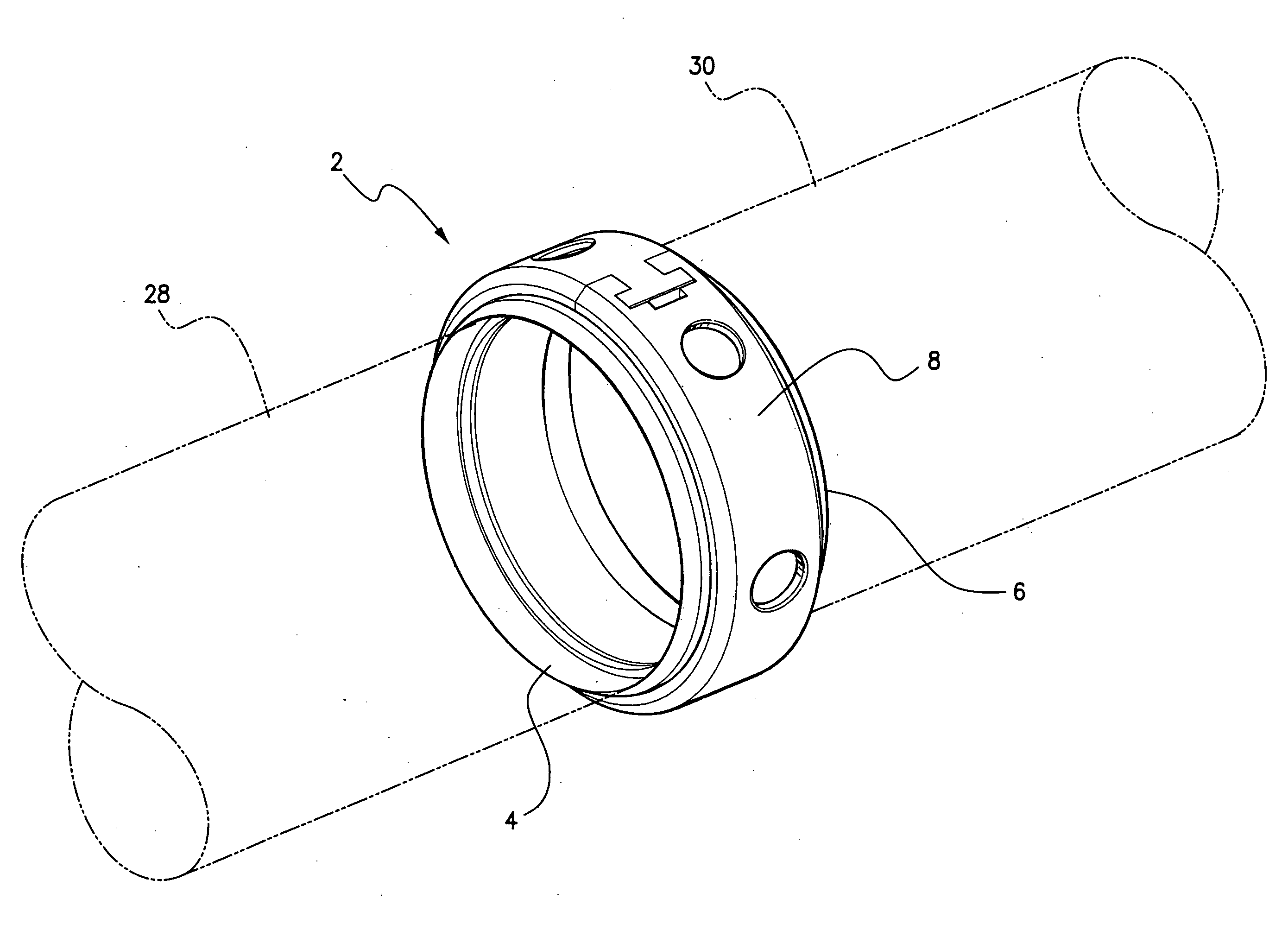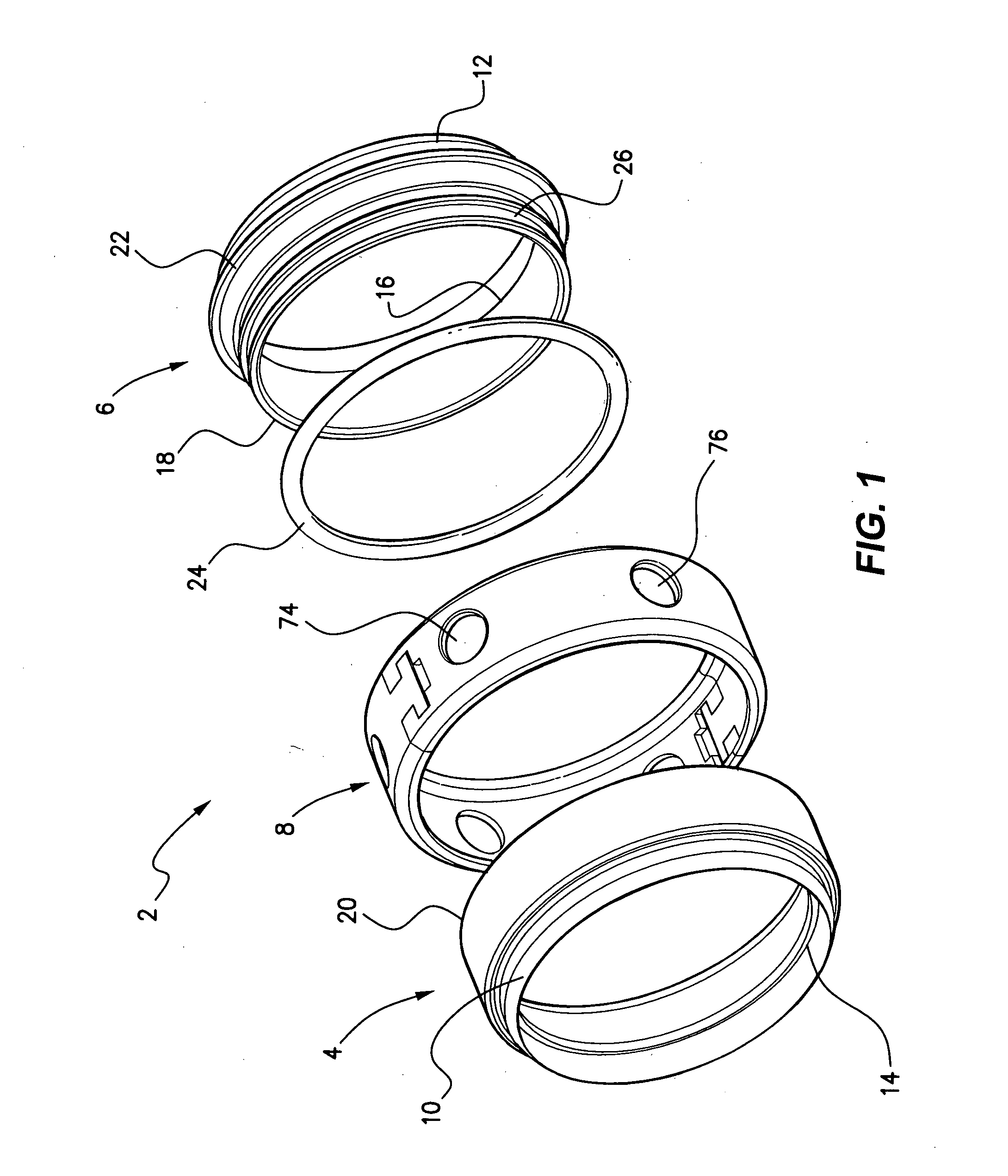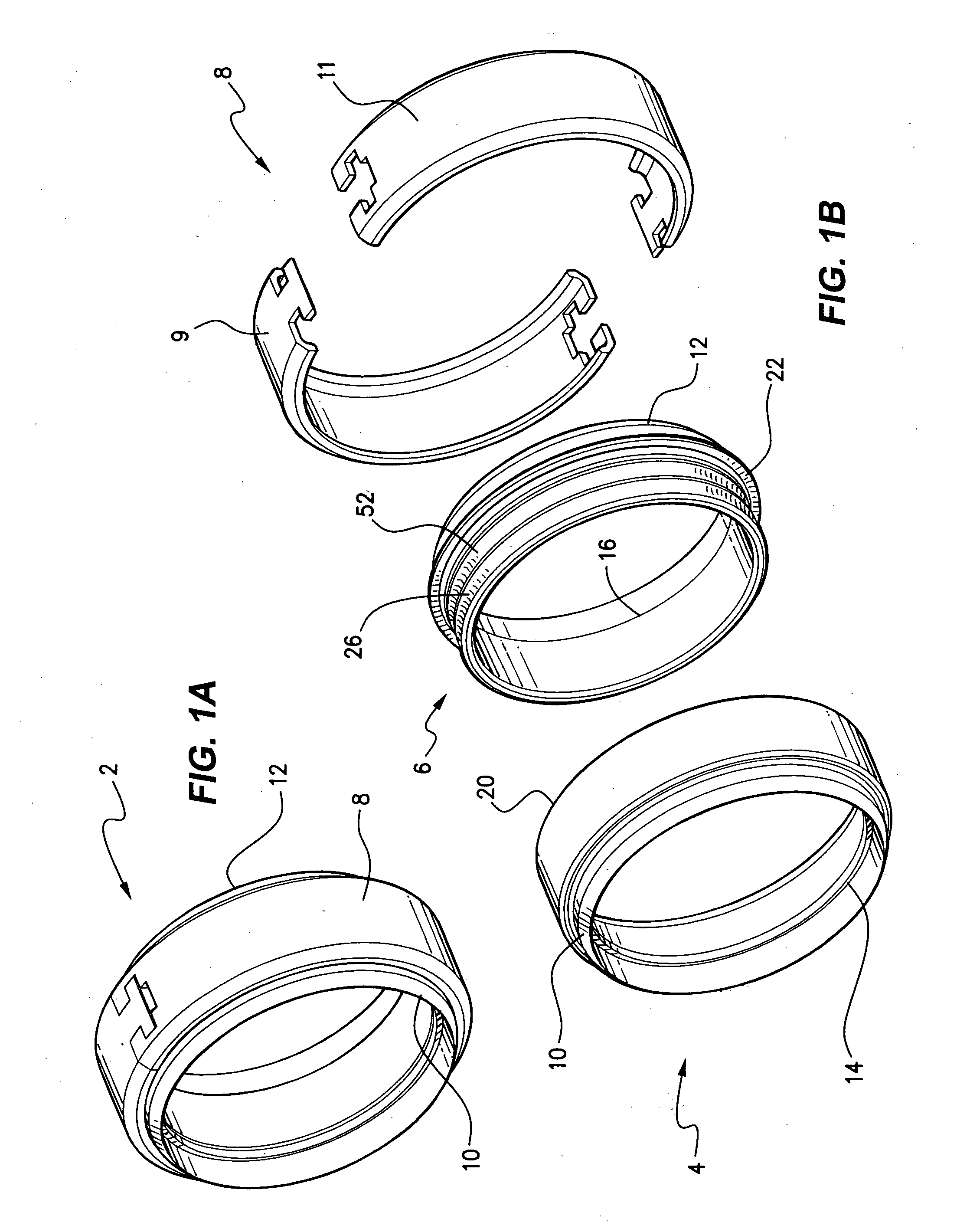Conduit Joining Apparatus
a technology of conduits and joining devices, applied in the direction of sleeve/socket joints, joints with sealing surfaces, fluid pressure sealed joints, etc., to achieve the effect of preventing the separation of each locking arrangemen
- Summary
- Abstract
- Description
- Claims
- Application Information
AI Technical Summary
Benefits of technology
Problems solved by technology
Method used
Image
Examples
Embodiment Construction
[0031]Referring to FIGS. 1, 1A to 1E and 2A to 2D there is shown apparatus 2 with the components of apparatus 2 separated. The apparatus 2 includes a first coupler 4 which is a female coupler, a second coupler 6, being a male coupler, and a snap-fit fastener 8. The first coupler 4 has a chamfered circumferential ring or edge 10 that is adapted to receive internally the end of one conduit, such as a pipe and similarly the second coupler 6 has a chamfered circumferential ring or edge 12 which is adapted to receive internally the end of a second conduit such as a pipe. Each conduit is respectively adhered to the respective coupler by suitable means, such as welding, soldering or gluing. The coupler 4 has an internal step 14 that abuts against the end of the respective pipe or conduit 28 and sets a limit beyond which the pipe 28 cannot move. Second coupler 6 also has a step 16 against which the end of its respective pipe 30 abuts and sets a limit beyond which the pipe 30 cannot move.
[00...
PUM
 Login to View More
Login to View More Abstract
Description
Claims
Application Information
 Login to View More
Login to View More - R&D
- Intellectual Property
- Life Sciences
- Materials
- Tech Scout
- Unparalleled Data Quality
- Higher Quality Content
- 60% Fewer Hallucinations
Browse by: Latest US Patents, China's latest patents, Technical Efficacy Thesaurus, Application Domain, Technology Topic, Popular Technical Reports.
© 2025 PatSnap. All rights reserved.Legal|Privacy policy|Modern Slavery Act Transparency Statement|Sitemap|About US| Contact US: help@patsnap.com



